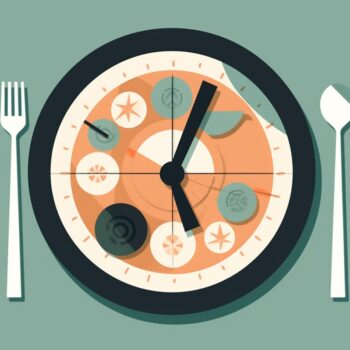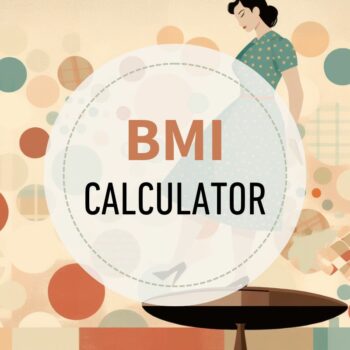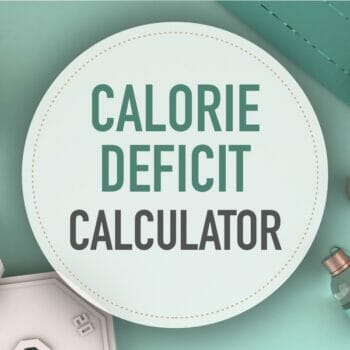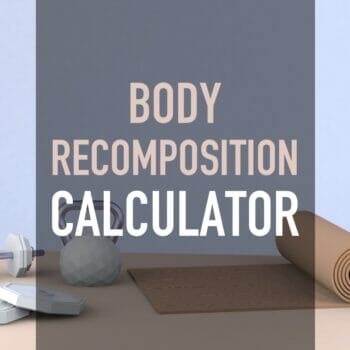Macro Calculator
This free, easy-to-use macro calculator gives you your optimal macronutrients and calories. It’s a weight loss or muscle gain calculator for both women and men.
Combine with macro counting or flexible dieting to reach your goals faster.
How to get leaner and stronger?
Our comprehensive macro-based fat loss program shows you how. Learn more
How do macros work?
The foods we eat are made up of three macros (macronutrients). These are carbohydrates (carbs), protein, and fat.
Chicken is high in protein but has no carbs; rice is high in carbs but has very little fat or protein. The three macronutrients provide the body with energy and raw materials for growth and repair.
By calculating the appropriate daily calorie amount for you, we can then break this down into the best macronutrient ratios to achieve weight loss.
Basic steps for macro counting
- Enter details into the calculator
Make sure to choose the correct goal. - Take note of your calories and macros
These will be the targets you are aiming for each day. - Track your macros
Use an app or pre-plan your meals. - Measure results
Don’t use basic weight scales.
Use proper body composition scales (we recommend Renpho) to measure fat and muscle mass changes.
What is a good macro ratio for fat loss or muscle gain?
Your macros should be based on your Total Daily Energy Expenditure (TDEE) and goals.
The calculator defaults to the best macro ratio proven to work for most people.
This ratio is:
- 30% fat
- Protein is 0.65 grams per pound of body weight,
- The remainder is carbs.
Depending on your goal, this will be either a calorie deficit or a surplus.
You can go further and make more adjustments: Perhaps you’re an extreme endomorph and do better with fewer carbs. Or perhaps you have one kidney and need to eat less protein.
You can fine-tune your results with a bit of math. See how to change your macros here.
What is a good protein ratio?
Rather than a percentage, proteins are based on your body weight. Our calculator has three settings:
- Moderate adjusts the ratio to 0.65 grams per pound of body weight.
This is appropriate for sedentary individuals or people with higher body fat percentages. - High is for active people with moderate strength training and an average body fat percentage.
- Maximum will set the ratio to 1 gram per pound.
This amount is good for bodybuilding and gaining muscle mass. You must be doing intense training.
Find out how to fine-tune your protein ratios when counting macros
Fat macro ratio
Set fat at 30% of daily energy expenditure.
Most people do very well with this amount of fat. See more about choosing the best macro fats. Because of high-fat diets like keto, many people are now eating more fat than they need to.
Carbohydrate macro ratio
Once you’ve calculated protein and fat, the remainder of your daily calories should be from carbohydrates.
Carbs fuel your body and workouts – and are the body’s preferred energy source.
If you are coming from a low-carb background, this may seem high. However, according to respected nutritional research, this is a moderate amount of carbs.
If you are eating according to your TDEE, the notion that carbs cause weight gain or stop fat loss is incorrect.
Using as a Calorie Deficit Calculator
As a weight loss calculator, this tool establishes a safe calorie deficit only.
The Lose option puts you in a 20% calorie deficit, promoting safe, steady weight loss.
The best macro ratio for body recomposition
If you want to recompose your body (lose fat and gain muscle simultaneously), then use the body recomposition calculator.
Macro ratio for maintenance
The Maintain button shows you the macro levels to maintain your current weight.
This is great if you have lost weight and don’t want to gain it back.
Macro ratio for muscle gain
The Gain button puts you in a 20% calorie surplus.
The macro breakdown is designed to build muscle fast in conjunction and must be combined with a comprehensive weight training program.
Underweight people can also use it.
TIP: Try starting with the maintenance goal and gradually increasing calories if you want lean muscle gains.
Calculating macros using your body fat percentage
The calculator uses your body weight to determine calories and macros.
However, you can obtain superior results by using your body fat percentage. The calculator allows you to choose which method: Normal for body weight, Lean Mass for fat percentage.
When to choose the Lean Mass Formula
If you are lean (have a low body fat percentage), choose the Lean Mass formula and enter your body fat %.
If you are classified as obese and have a lot of weight to lose, the lean mass formula is superior. You can read more about macro counting and obesity.
Help? Calculate your ideal body weight or get an assessment of your body fat percentage.
Why the difference? Muscle cells burn more calories than fat cells, so the more accurately we measure this, the better your results will be.
How to calculate macros per meal
You can break this down into meals once you’ve calculated your daily macros in the calculator.
Choose from 2 to 6 meals daily to see the macro ratio you can track for each meal. For some people, this is easier, but for others, this is too much detail.
Do what works for you.
Meal Plans
See a 5-day macro-based meal plan. It includes three meals and two snacks per day.
Macro calculator activity level settings
A higher activity level means a higher daily calorie goal.
For example – if you maintain your weight at 2,000 calories per day, adding vigorous daily exercise means you need more calories to maintain your weight.
If you are sedentary and trying to lose weight, adding exercise will increase your daily calorie goal.
The idea seems counter-intuitive, but more energy is required to fuel your workouts. More workouts lead to increasing metabolism; therefore, more fat is burned!
Undereating is one of the leading causes of the weight loss plateau.
So many of our clients previously “hit the wall” with dieting. They would continually reduce calories, stop losing fat, and gain weight when they eat a little more.
Macro counting defeats this by prescribing the right food and calorie levels.
Which activity level do I choose?
- Sedentary: Just regular everyday activity like a bit of walking, a couple of flights of stairs, eating, etc.
- Light: Any activity that burns 200-400 calories (females) or 250-500 calories (males) over your sedentary amount.
- Moderate: Any activity that burns 400-650 calories (females) or 500-800 calories (males) more than your sedentary amount.
- Extreme: Any activity that burns more than 650 calories (females) or more than 800 calories (males) in addition to your sedentary amount.
Other options for determining your calorie burn
- Use our calories burned calculator – it accurately assesses over 380 activities.
- Use a fitness tracker – like a Fitbit or Apple Watch (note that they can overestimate calorie burn).
- Use a suitable app – like MapMyFitness
Why should I eat more when I exercise more?
High physical activity not fueled with enough calories will lead to muscle catabolism (breakdown of muscle fiber).
This lack of nutrition could stall your weight loss, so eat up if you love to exercise!
I’ve got my macros – now what?
Once you’ve identified your target daily macros, you must determine the macros in all your foods.
By tracking them daily, you can reach your recommended macro targets that encourage fat loss, muscle gain, or whatever your goal may be.
You can learn more about the macro counting system and the flexible dieting philosophy. Many people use an app like Myfitnesspal to track macros.
For more specifics on what to eat – see a sample macro meal plan or a list of macros for familiar foods.
View article sourcesSources
- Mifflin, M. D., St Jeor, S. T., Hill, L. A., Scott, B. J., Daugherty, S. A., & Koh, Y. O. (1990). A new predictive equation for resting energy expenditure in healthy individuals. The American Journal of Clinical Nutrition, 51 (2), 241-247. Link
- McArdle, W. D., Katch, F. I., & Katch, V. L. (2010). Exercise physiology: nutrition, energy, and human performance. Lippincott Williams & Wilkins. Link
- Jequier, E. (1994). Carbohydrates as a source of energy. The American journal of clinical nutrition, 59(3), 682S-685S.
- Lemon, P. W., Tarnopolsky, M. A., MacDougall, J. D., & Atkinson, S. A. (1992). Protein requirements and muscle mass/strength changes during intensive training in novice bodybuilders. Journal of Applied Physiology, 73(2), 767-775. study abstract link
- Grundy, S. M. (1999). The optimal ratio of fat-to-carbohydrate in the diet. Annual review of nutrition, 19(1), 325-341. abstract
- Conlin, L.A., Aguilar, D.T., Rogers, G.E. et al. Flexible vs. rigid dieting in resistance-trained individuals seeking to optimize their physiques: A randomized controlled trial. J Int Soc Sports Nutr 18, 52 (2021). https://doi.org/10.1186/s12970-021-00452-2
2,104 Comments


 Menopause Macro Calculator
Menopause Macro Calculator Intermittent Fasting Calculator
Intermittent Fasting Calculator BMI Calculator
BMI Calculator Calorie Deficit Calculator
Calorie Deficit Calculator Body Recomposition Calculator
Body Recomposition Calculator
Hi I am struggling to work out how many calories I should intake to lose fat and gain muscle ? (In skinny fat) I’m 4ft 11, 112 pounds and 39 years old . Would appreciate it if you could help , I want to build muscle and lose body fat thanks Christine x
Hi Christine, I’d love to help and that can be a balancing act so glad you reached out. My Macro Solution Ultimate includes custom calculations plus also my Muscle Gain Edition. Seems like both would be really beneficial.
Hi,
Would you recommend going straight into a deficit or start at maintenance for a couple weeks and then start the deficit or start at maintenance for a few weeks and then jump straight down to the deficit numbers?
Hi Jay, Most of the time you should go straight to the deficit. The only exception would be if your deficit TDEE is more than 800 calories lower than what you’re eating presently. Then you may want to gradually get to your full deficit to be less of a shock to your system. All the best!
How do you adjust your macros and how long should you wait to see results before adjusting your macros? If my macros are 150c, 45f, 125p and I am wanting to lose weight. How would I adjust these numbers if I do not see weight loss after a few weeks. Additionally, what if at the end of the day I still have macros I need to consume but I am not hungry is it ok to stay below the macros number bc its less calories or should I just make myself eat so I hit those macros?
Hi Claire, Weight loss is determined first by getting your weight loss TDEE right and then macros are based on that. You should evaluate every two weeks and then make adjustments. Usually shaving off 100 calories is a good starting place. If you’re not hungry then you may have been too generous in calculating things or you’re eating exercise day macros on rest days. I’d love to help you with all this so if you need me to do your calculations there’s an option for that here: The Macro Solution
Hi im 5’1 I weight 155 pounds! I would like to loose around 30-35 pounds what would be my macros?
Hi Kayla, Thanks for stopping by. You can use my calculator for an estimate but if you want a more fine-tuned estimate consider one of my coaching options. Personalized Macros Coaching
Hi! Im getting back into the groove of working out (its been a while) but plan to incorporate it at least 3 times per week. It will be high intensity with a mix of lifting. Should I keep activity level at light throughout the entire week, or should macros be adjusted on non workout days?
Hi Vanessa, Great job in getting back into the groove. You should try to align, best you can, your energy output with your energy input. Therefore eat more on days you workout and less on days you don’t. This is one of the keys to a life-long healthy weight Maintainance.
Hi Ted, I’m 51, I weigh 300 and am 6’1″. What protein level should I choose to lose body fat?
Hi John, Since you have about 100 pounds of fat tissue, you should use the low setting or a max protein of 170-190 grams. You also may want to consider having me help you with your calculations since having a lot of fat tissue will skew the formula used in my calculator. All the best with your journey to improve your health!
Say our gain calories and activity level are set right. How much weight should we be gaining each month? What would be too much so that we know to scale back on the calories or increase the energy input?
Hi Leon, A lot of this would depend on what weight training program you have in place and your consistency there. But 2-4 pounds per month is a realistic goal. You should be tracking your body fat percentage because you want the gains to be lean mass and not fat mass. If you’re gaining fat, you want to cut back on your calories.
I show the numbers from macro calculator the same value in Cronometer, but it shows the same number value for grams here as it does in kCal from Cronometer. For example, with carbs=200kcal in Cronometer vs. here at 200g. If I switch to Grams in Cronometer, it reads 130grams for carbs.
Hi James, I’m not quite sure what you mean. 200 g of carbs is 800 kcal. 130 grams of carbs is 520 kcal. There are 4 kcals per gram of carbohydrates. If Chronometer isn’t reflecting that then something is wrong there.
Hi Ted ,
Quick question,
I have a TDEE of 2259 and my carbs is 159 protein 157 fat 60.
Currently at 242 pounds I want to lose about 40 pounds does that sound right to you and feasible?
Sendentary activity due to health issues can’t really excercise but walk 30 mins a day
And calorie intake will be 1759
Hi Destiny, Make sure you set your macros based off of 1759. Also since you likely have more than 50 pounds of fat tissue you may have to shave off a little more to compensate. Start there and see how it goes and shave off more in the weeks to come once you see how your body responds.
Great Calculator and Article man! Just put it in my favorites
Thanks, Cody! Glad you found it useful.
Hi I’m hoping you can help me. In 2017 I had gastric sleeve surgery. I would like to lose 35-40 lb of regain. I’ve been doing Optavia for a few months and lost 22. I still have some restriction in my stomach. I also have a lot of lose skin. I used the calculator and it gave me
1487 Cal
Carb 100
Protein 160
Fat 50
I put in I was sedentary but started doing strength training 6 days a week for an hour using body weight and 8 lb dumbbells. I have been doing this for two weeks and gained 2 pounds. Help! Do you have any experience with Bariatric people, higher fat percentage, and lose skin…..wondering if that is skewing things for me.
Hi Jenn, Thanks for reaching out. I have had many GS clients over the years. It does look like your sedentary calculation is being skewed a bit and recommending you eat a little more than you should be. Also, if you are strength training it’s not uncommon for your weight to increase a little from the training which is both from added muscle and water retention in your muscles. I’d be happy to have a look at everything and calculate some optimal numbers for you to use. See my coaching page in the site menu above.
I have never commented before on any forums or discussion, however, I found this so helpful that I wanted to reach out and thank you. I literally just found out I’ve been undereating, probably my entire life. The amount of carbs I currently eat is far lower than what I should have. Crazy, just crazy.